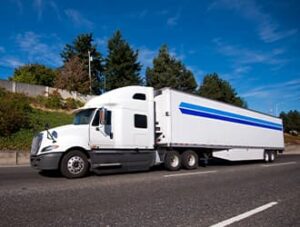After you have been in a car accident, the crash report filed by police is the first piece of evidence you will need to file a claim seeking compensation for your injuries or other losses. In Colorado, the state updated the police accident form in 2021.
Colorado’s DR3447 Traffic Crash Report Form is a complex document of five pages, some of which may be used multiple times to document a traffic accident. The CDOT provided police across the state with a 306-page Investigating Officer’s Crash Reporting Manual and eight chapters of training videos to explain how to fill out the updated accident report.
Explaining the reasoning behind the update, the Colorado Department of Transportation said the agency revised the accident report form to reflect emerging factors affecting accidents, including the growing presence of bicyclists and pedestrians on the road, driver distraction caused by mobile phones, impairment by marijuana, and the development of self-driving vehicles.
At The Wilhite Law Firm in Denver, CO, our Denver car accident attorneys can help you obtain the police report documenting your car accident and use it to begin investigating your claim. For 40 years, the dedicated car accident attorneys at The Wilhite Law Firm have been fighting for the rights of people who have been seriously hurt in crashes caused by other people’s negligence. We want to help you, too. We start with a free review of your accident and a discussion of your legal options.
How to Obtain Your Colorado Car Accident Report?
If you have a copy of the accident report when you meet with The Wilhite Law Firm, we can immediately begin investigating your car accident. You can request a copy of a crash report by completing DMV Form DR 2489 and mailing it (and the $9 fee) to:
Colorado Division of Motor Vehicles
Records Department
1881 Pierce St.
Lakewood, CO 80214
What Information Does a Colorado Police Car Accident Report Contain?
Fortunately, it is easier to glean useful information from Colorado’s car accident report than it is to complete the report form.
Page 1 of Colorado’s DR3447 Traffic Crash Report Form starts by requiring the basic information about a car accident — date, time and where it happened, number of vehicles, and number of people injured or killed. It also asks for the name and badge number of the police officer who responded to the accident, and their agency.
Next, the form asks for a description of what happened in the crash — the harmful event sequence. The officer can choose up to four events that occurred from a list of 46 choices and designate one as the “most harmful event.”
After a multi-vehicle collision, the officer may choose from several types of collisions such as front to rear collision or front to side collision. The officer may check off factors related to road conditions, including curves, turns, hills, lighting conditions, and inclement weather.
If there was a fatality in the crash, the officer must note at the bottom of the first page the time that emergency medical responders arrived and whether traffic control devices were functioning. A traffic fatality occurs when anyone involved in the crash dies within 30 days of the accident as a result of injuries suffered in the accident.
Page 2 of the form calls for the officer to describe the accident and to draw a diagram of the crash. Below this, the officer fills in the names and addresses of the owners of property damaged in the crash and describes the damage.
This is typically where the vehicle owners or drivers involved are listed. The form also calls for checking off whether public property was damaged.
Page 3, the drivers and vehicles involved in the accident are fully identified, including names, addresses, dates of birth, driver’s license numbers, vehicles’ make and model, and license plate numbers.
In the middle of the page, the officer can make marks on an outline of a car to show where a vehicle was damaged. The officer can indicate whether the damage is slight, moderate, or severe. This is a section to check closely. If the officer misstates the amount of damage to your vehicle, we can help you have the report amended, which will be helpful if you file an insurance claim.
Next, the officer may choose from a list of vehicle issues or mechanical defects that contributed to the crash such as, for example, defective headlights or improperly loaded cargo.
In a fatal accident, the officer may choose from a list of crash avoidance maneuvers attempted such as braking, accelerating, or steering and braking.
The last section of Page 3 requires the officer to document where each occupant was seated in each vehicle when the crash occurred, whether each occupant wore a seatbelt, whether an airbag inflated, and how severely each person was injured. This information is recorded with codes found on Page 5.
The form provides a checklist on Page 4 of driver actions and contributing factors. Some examples of contributing factors include driver inexperience, fatigue, distraction, and talking on a cell phone.
Page 4 of the form also has a short “autonomous vehicle capability” section. The officer can identify whether a vehicle involved in a crash had driver assistance or any of four levels of automation.
What a police officer wrote about how severely you were injured is another point of information to check closely on a police report.
What Truck Accident Information is on a Colorado Police Report?
 If a tractor-trailer, tanker truck, dump truck, or another large commercial motor vehicle was involved in the accident with your vehicle, the officer will enter information about the commercial vehicle and its driver on Page 4 of the police report. This includes vehicle type, the direction the vehicle was traveling, and whether the truck driver did anything to try to prevent the truck accident. Contact our Denver truck accident lawyer today.
If a tractor-trailer, tanker truck, dump truck, or another large commercial motor vehicle was involved in the accident with your vehicle, the officer will enter information about the commercial vehicle and its driver on Page 4 of the police report. This includes vehicle type, the direction the vehicle was traveling, and whether the truck driver did anything to try to prevent the truck accident. Contact our Denver truck accident lawyer today.
Visit Our Personal Injury Law Offices in Denver, CO
Contact a Colorado Car Accident Attorney
As you can tell, the accident report filed by police in Colorado contains a lot of information about a crash. However, police vary in how carefully they complete the report. If you have been injured in a car accident that was not your fault, you may be entitled to seek compensation for your losses from the driver who caused the crash. A car accident lawyer from The Wilhite Law Firm can help you seek just compensation for your losses.
Contact us in Denver today to discuss the circumstances of your accident and your legal rights to claim compensation. Let The Wilhite Law Firm stand up for you.
















